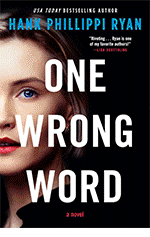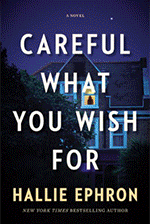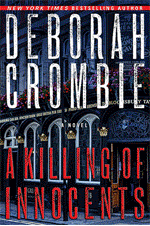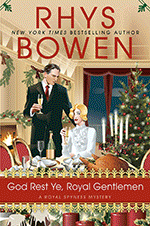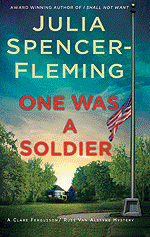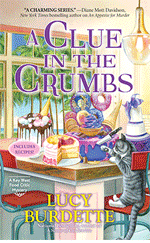DEBORAH CROMBIE: I have been a huge fan of Laurie R. King's Mary Russell novels since the publication of the very first in the series, THE BEEKEEPER'S APPRENTICE, so I'm thrilled to be introducing the latest Mary Russell and Sherlock Holmes adventure, #18, THE LANTERN'S DANCE!
Here, Laurie gives us a behind the scenes look at the choices she made as she was plotting--and I'd love to read every one of these potential stories.
Sherlock Holmes and the Easter Eggs*
Laurie R. King
I sometimes wonder if I write as an excuse for research. In
part, it’s the travel—when you’re writing a book about Japan or Transylvania or
the Riviera, you have to go there, right? Smell the air, taste the food? And in
part, it’s being what my daughter calls a recovering academic, a person whose
grad school career was diverted into a life of fiction rather than a life of
theological minutiae.
But honestly, what’s not to love about diving into the historical
background of your characters?
One of those characters is
Sherlock Holmes, and after decades of pastiches, film versions, and
fan-fiction, you’d think people had discovered or invented absolutely
everything about him. And it’s true, in the course of a career battling
everyone from Jack the Ripper to Nazis to Martians (yes, I’m afraid so), Holmes
has gone everywhere.
Except perhaps his own past.
Yes, says the writer’s
brain: let’s go there!
And let’s structure the book
with glimpses of the past, so we can shape a story that’s like a zoetrope, with
a series of images that comes to life as the wheel spins: The Lantern’s
Dance.
But where to start? Well, one of
the few things Arthur Conan Doyle tells us about his detective, in a story that
introduces Sherlock Holmes’ previously unknown brother, Mycroft (“The Greek
Interpreter”) is that their grandmother came from a famous family of artists.
As Holmes says to Dr. Watson:
“My ancestors were country
squires, who appear to have led much the same life as is natural to their
class. But, none the less, my turn that way is in my veins, and may have come
with my grandmother, who was the sister of Vernet, the French artist. Art in
the blood is liable to take the strangest forms.”
“But how do you know that it is
hereditary?” [asks Watson]
“Because my brother Mycroft
possesses it in a larger degree than I do.”
Naturally, if I wanted to write a
story exploring the personal history of Sherlock Holmes, I needed to know
something about the Vernets. And naturally, for a writer like me with a taste
for academic research, the waters of the investigation pool quickly grew very
deep indeed.
I shall not burden you with the…
shall we say, challenge of the Vernet genealogies and family histories,
no two of which agreed on dates, relationships, or even the sex of a child. Nor
will I tell you my personal feelings about a family that cannot stick to an
identity, but drops names, randomly switches around their first and middle
names, or even adopts one that they like better. I will merely say that there’s
good reason why we didn’t create a family tree for The Lantern’s Dance’s
book club guide.
But—let’s start small, and first try
to decide which “Vernet, the French artist” Holmes was talking about. That is a
fairly simple problem, for if we work back from the birth date of the elder
Holmes brother (1854, though some sources say 1847), it would suggest a grandmother’s
birth date somewhere between 1785 and 1815. The Vernet artist who matches those
dates as a brother would be Horace (1789-1863.)
(Horace, Self Portrait, 1835)
Therefore, if we’re interested in playing
with the links between the Holmes family and the Vernets in The Lantern’s
Dance, the artist we want to start with is Horace.
The problem is, even this one
single Vernet carries with him such a huge wagon-load of fascinating facts and
potential story lines that I could have written half a dozen books, each
following a different side-track.
Such as Horace Vernet’s childhood
traumas. As a three-year-old during the Revolution, little Horace was rushed through
a hail of bullets in the Tuileries. Soon after, his aunt was put to the
guillotine by a colleague of Horace’s artist father, Carle, by name of Jacques-Louis
David. What if, all these years later, Sherlock Holmes were to uncover some
secret rivalry between David and the Vernets, that…
No. Too convoluted, too thinly
linked with Horace—and in any case, I don’t want to spend large portions of this
book buried amidst the horrors of the French Revolution.
But what about Horace Vernet’s
time in a later unrest, the 1848 revolution? His paintings were burned, he was
forced to retreat to a small apartment in the Institut de France, he
conveniently found a change of patrons…
No: pas de révolution!
How about some nice espionage
instead? Ah yes, that’s more like it.
Without giving away plot-spoilers,
Horace Vernet does indeed enter our story, during his 1839 sketching trip to
Egypt and Palestine. His companions include a young man with a daguerreotype
camera—only invented that year—and a nephew by the name of Charles Burton.
Burton is an Army officer fluent in Arabic, 26 years old, who happens to be
free to accompany his famous uncle, providing the skills both to translate and
to guard this remarkable new machine capable of recording clear and detailed
images of such places as Acre and Cairo. Vernet’s reputation preceeded him,
clearing the way for the artist and his companions to move among the important
officials and leaders of the area.
Hmm, says the writer’s brain: access plus communication skills plus a
plausible reason for poking around equals a superb opportunity for sending back
reports and images to the French military.
So what if….?
But along that track, too, lies a
plot that is not what I need.
There is another generation of
artists already in this book. I need the Vernets for their art, not their
opportunities for espionage.
Reluctantly, grudgingly, I scoop
up whole pages of a first draft involving 19th century spycraft (Horace
even went to Russia! I could write about the Czar!) and drop them into the
“Cuts” file.
Instead, the Egyptian sketching
expedition takes on a different role, with Horace’s travels made to serve a
rather different purpose in the plot. Don’t worry, espionage remains—I couldn’t
resist that temptation—but in a far more covert manner than the original
thought.
The spying, the travel, the
references to specific Vernet paintings all become Easter Eggs, little spots of
colorful treasure that not everyone will see, but which nestle into the story
and await discovery. A game, between a writer and her readers.
But still, I am curious. If I were
to go back and re-make those decisions that went into The Lantern’s Dance, if
I were to pick up one of the discarded possibilities that my research teased me
with, which do you think that should be? The French Revolution? Artistic spies
in North Africa? Some side task required by Czar Nicholas, perhaps?
Let me know what you’d like in the
comments. After all, that’s what short stories are for!
* Easter Egg: a bit of hidden treasure, or an inside joke among game-players.
Laurie R. King is the bestselling author of 30 novels and other works, including the Mary Russell-Sherlock Holmes novels. She has won the Agatha, Anthony, Edgar, Lambda, Wolfe, Macavity, Creasey dagger, and Romantic Times Career Achievement awards, has an honorary doctorate, and is a Baker Street Irregular and a Mystery Writers of American Grand Master. She is celebrating thirty years of Russell & Holmes with a series of all-day Beekeeper’s Apprentice events (see her events page) and her new book, out on February 13, is The Lantern’s Dance.
Mary Russell and Sherlock Holmes, hoping for a respite in the French countryside, are instead caught up in a case that turns both bewildering and intensely personal.
DEBS: Horace was quite the dandy, wasn't he? What fun!
And we have more fun for you today--2 GIVEAWAYS!!
#1
Comment here on the BLOG to be entered to win a signed copy of THE LANTERN'S DANCE!!
#2
And comment over on our REDS & READERS Facebook group to be entered to win a copy of ECHOES OF SHERLOCK HOLMES, a fabulous collection of Sherlock-themed short stories edited by Laurie and Leslie Klinger. Hank, Hallie, and I all have stories in this anthology and it is such fun!!
If you haven't joined our REDS & READERS FB group, here's the link.
You can learn more about Laurie and THE LANTERN'S DANCE here:
Web site: https://laurierking.com
Events: https://laurierking.com/
The Lantern’s Dance: https://laurierking.com/books/










